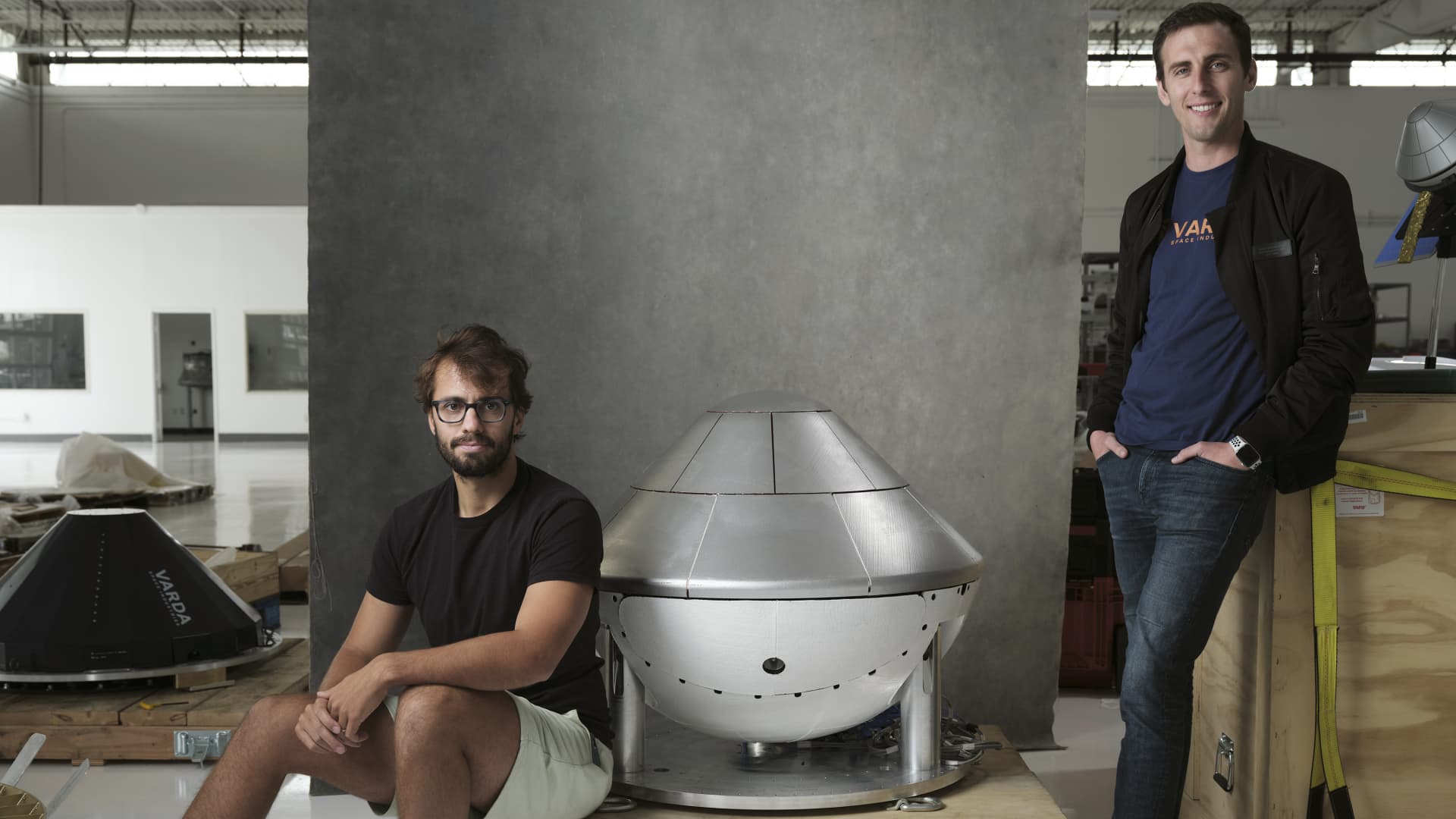Space factory startup Varda secures NASA partnerships ahead of demo flight next year


Early stage Varda Space Industries has signed a pair of agreements with NASA, the company announced Friday, securing access to key technologies the company will need for the first demonstration of its space factory system.
Varda’s goal is to develop a new method for manufacturing materials in space, an opportunity to build products that are useful on Earth more efficiently in space’s microgravity. The International Space Station has served as a test bed for the technology – but Varda wants to produce materials at a greater scale. A recent McKinsey report highlighted the potential for making things from semiconductors to pharmaceuticals and more.
“These partnerships with NASA are a great way for us to accelerate development,” Varda co-founder Delian Asparouhov told CNBC.
Varda’s system uses a three-piece vehicle: A spacecraft, a manufacturing module, and a heatshield-protected capsule to reenter through the atmosphere and land. Founded in late 2020, Varda has raised $53 million to date and recently moved into a 61,000-square-foot headquarters in El Segundo, California.
Its first mission is set to fly on a SpaceX launch, called Transporter-8 – planned for the second quarter of next year. Rocket Lab is supplying the spacecraft for the first four missions, with Varda making the manufacturing module and capsule in-house.
Varda’s pair of Space Act Agreements signed with NASA – one with the Ames center in California and the other with the Langley center in Virginia – gives the company access to reentry and heatshield technologies needed for its mission. This type of NASA partnership varies in scope, but typically gives space companies access to the agency’s technology at little to no cost.
The partnership with NASA’s Ames will allow Varda to purchase heat shield material, which Asparouhov noted “is a highly sort of proprietary material that is quite difficult to get from NASA given the limited inventory.”
In addition to purchasing material for at least Varda’s first two missions, the agreement also gives the company the know-how to make the heat shields itself – which co-founder and CEO Will Bruey described as a “big vertical integration move for us.”
“It’s a great reciprocal relationship, because with the tech transfer from NASA we can also commercialize at the heat shield level and help them develop it further,” Bruey said.
Varda’s agreement with NASA’s Langley gives the company access to atmosphere reentry data, another crucial piece for its system.
“Basically getting access to a data model of how objects enter into the atmosphere,” Asparouhov said, adding that “it’s incredibly important” for winning approval from the Federal Aviation Administration when returning the spacecraft to Earth.
Varda’s first version of its reentry capsule will be 90 kilograms (or about 200 pounds) in total, the company said. It represents a minimum viable product to prove the system works, and will return a few kilograms of manufactured material. Varda has yet to announce what material will be manufactured on the initial missions.
The first capsule version will fly Varda’s first four missions and will return up to 10 to 15 kilograms of manufactured material per flight. The company aims to move to a second version of the vehicle near the end of 2025, designed to increase the amount of material returned to up to 100 kilograms at a time.
Varda’s new headquarters gives the company the manufacturing capability to produce between “six to eight flights per year,” Asparouhov said. The company is currently in the middle of its testing campaign for the first mission, conducting drop tests and working on integrating the vehicle with Rocket Lab’s spacecraft.
“It’s now all execution risk, my favorite type of risk to have,” Bruey said.
Asparouhov, who is also a principal at Peter Thiel’s Founders Fund, noted that Varda is “pretty confident” that it can “get through the first mission easily without further fundraising.”
So far the company says its plan has progressed better than expected and its team has grown faster than previously forecast to more than 60 people.
This post has been syndicated from a third-party source. View the original article here.




